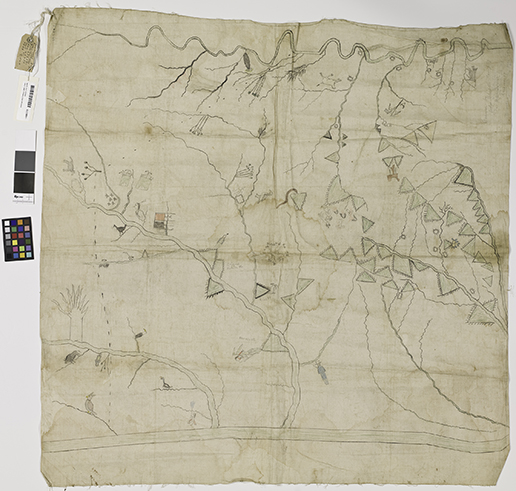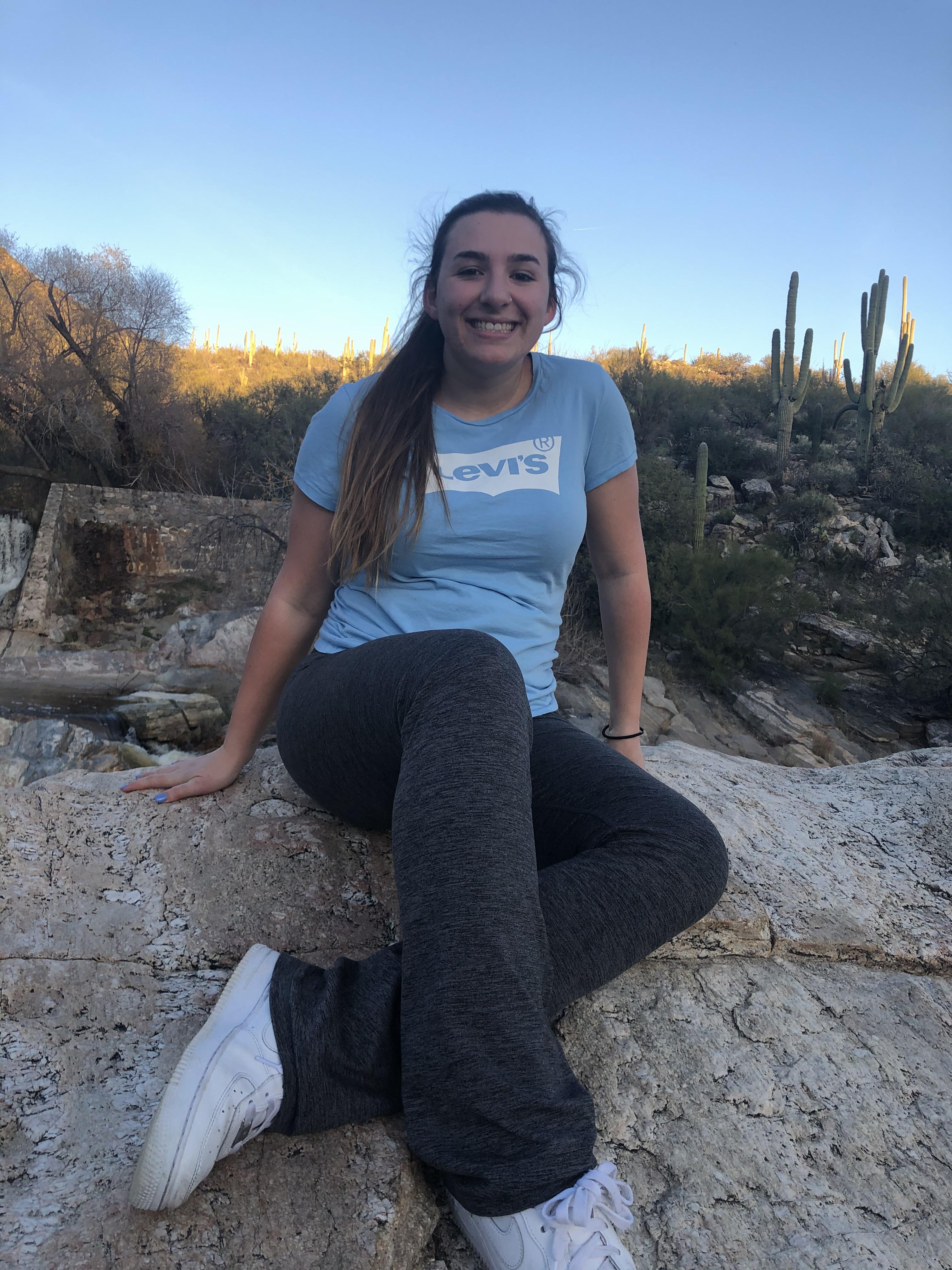There once was a man named Black Goose who lived on the Kiowa-Comanche-Apache (KCA) Reservation in Oklahoma Territory. In the 1890s a group of US attorneys approached him to create a map of the KCA area, for use in legal disputes over the Texas border and KCA Reservation boundaries. His product, a colorful depiction of plains topography, is a rich display of Kiowa experience and history across the landscape.
Geography Professor Dr. Mark Palmer presented Black Goose’s map to students Sarah Frost (senior/geography) and Grace Martinez (junior/biology), as part of a semester-long honors project. Their work has been to analyze and interpret the map, and to explore symbology as a means of storytelling. The original work is with the Smithsonian, but Palmer has a digital copy of it used by the project partners.
Geography Professor Dr. Mark Palmer presented Black Goose’s map to students Sarah Frost (senior/geography) and Grace Martinez (junior/biology), as part of a semester-long honors project.




